Conveyor rollers is an important tool for transporting and moving materials. They are used in many fields, such as industrial production, warehousing, logistics, mining, metallurgy, and chemical industries.
Roller conveyors comprise rollers, frames, brackets, and drive parts. They transport materials using rotating rollers.
The quality of a roller depends on its covers. These covers can improve grip, absorb shocks, reduce noise, and protect rollers and materials during transportation. We looked at different types of conveyor roller covers, their material options, and the best uses for each type.
A conveyor roller cover is a replaceable protective layer or functional cover installed on the outer surface of a conveyor roller. Its core function is to improve the overall performance of the conveying system through modular design. The main functions include:
Friction enhancement: using high friction coefficient materials (such as polyurethane or rubber) and surface texture treatment (diamond/fishbone pattern) to optimize the power transmission efficiency between the material and the belt;
Precision guidance: The self-correction function of the belt is achieved through a preset flange structure or V-shaped guide groove, reducing the deviation rate to <2%;
Dynamic buffering: The elastomer material can absorb 5-15% of the impact energy, effectively protecting the integrity of brittle materials (such as glass products);
Wear-resistant protection: The Mohs hardness of the ceramic composite sleeve can reach level 9, which extends the life of the roller by 3-5 times;
Carbon steel roller covers
High strength: Carbon steel rollers can resist high pressure and carry heavy objects. They can hold more than three times the weight of aluminum alloys. This makes them ideal for moving steel ingots in the metallurgical industry.
Good processability: Supports rapid modification of flame cutting/welding, and can meet the different sizes and shapes you need.
Cost-effectiveness: Carbon steel rollers cost only one-third as much as stainless steel rollers. Their maintenance cost is just 30% of buying new ones. Industries widely use carbon steel rollers in mining, metallurgy, and other transmission systems involving heavy objects.
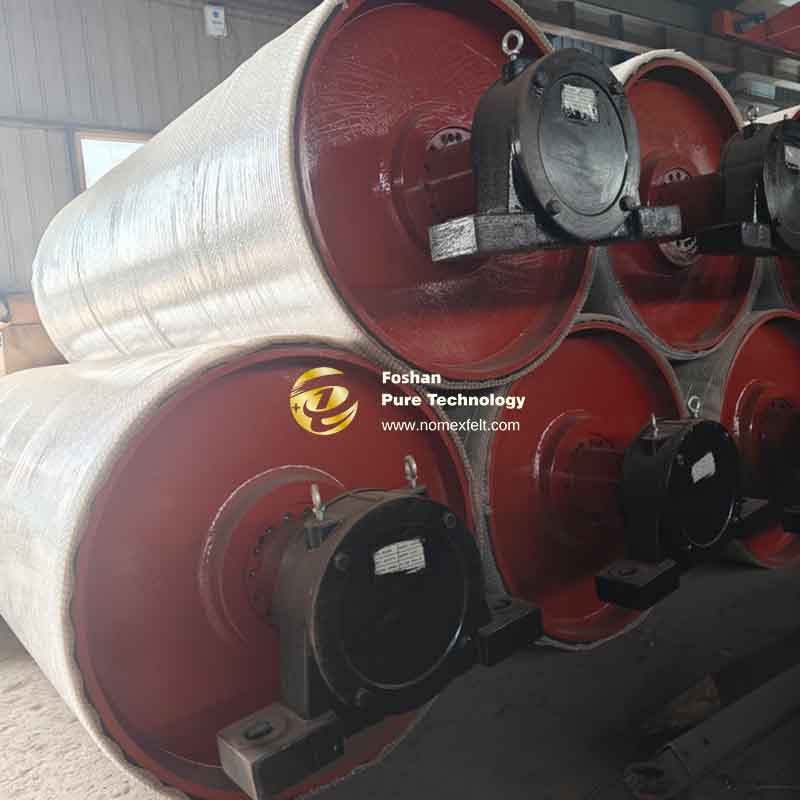
Stainless steel roller covers
Beautiful surface and good corrosion resistance, longer and more durable than ordinary steel pipes;
Resistant to high-temperature oxidation, high strength, acid, and alkali resistance;
No surface treatment is required, and simple maintenance;
High finish, easy to clean;
Currently, in the roller industry, there are two types of stainless steel commonly used, one is 201 and the other is 304. Stainless steel rollers are great for industries like food, medicine, and chemicals. These industries need high hygiene and corrosion resistance.
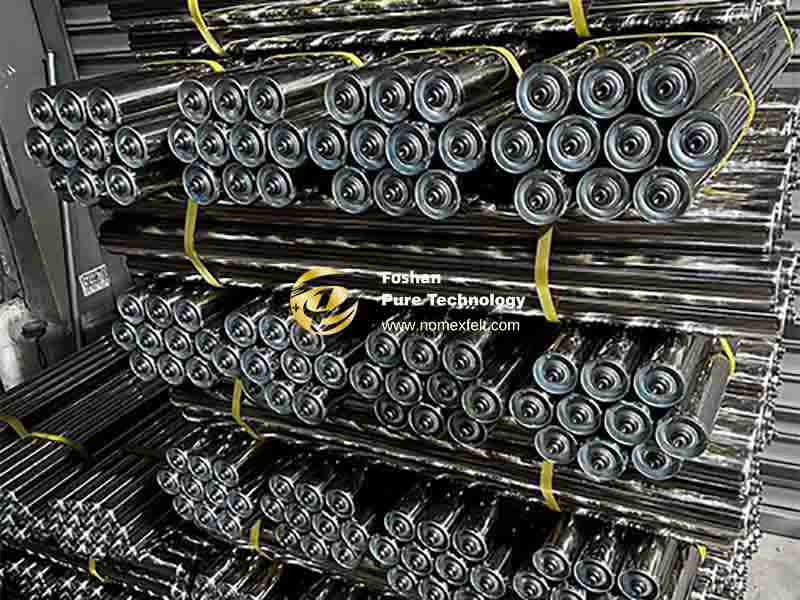
Aluminum alloy roller covers
Aluminum alloy is not as strong or hard as steel or stainless steel pipes. Its winding strength is about one-third of regular steel pipes. However, aluminum is much lighter, weighing only 36% of steel pipes. It also has some corrosion resistance.
Aluminum alloy rollers are suitable for weight-sensitive, corrosion-resistant, and heat-conductive transmission systems, such as aviation, aerospace, and automotive industries.
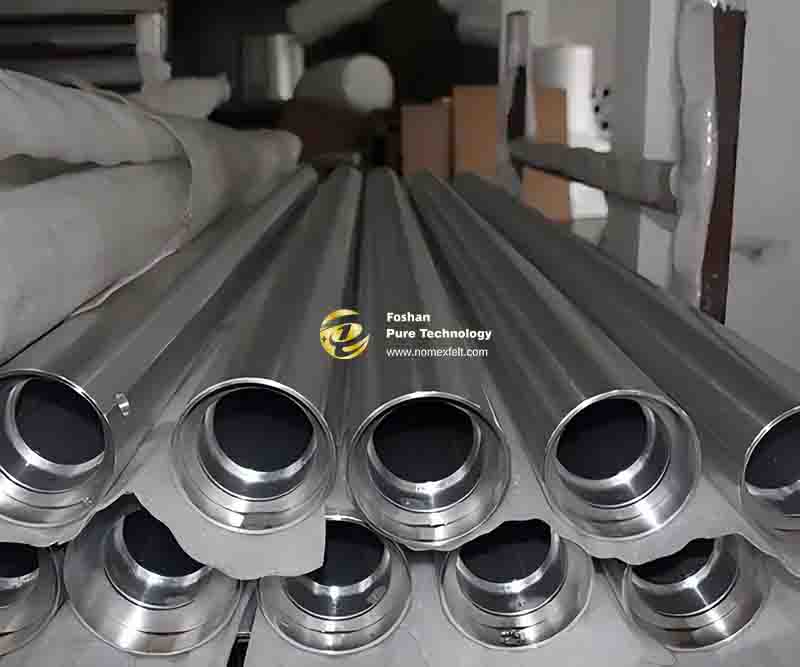
Polyurethane roller covers
High wear resistance: Polyurethane rubber rollers have higher wear resistance and can withstand high-intensity and long-term workloads.
Anti-aging: Even if used for a long time in a high-temperature and humid environment, there will be no obvious performance degradation.
High processing accuracy: Polyurethane rubber rollers have high processing accuracy and can meet various high-precision industrial needs
Polyurethane rubber rollers are suitable for various industries, such as printing, textiles, papermaking, plastics, etc.
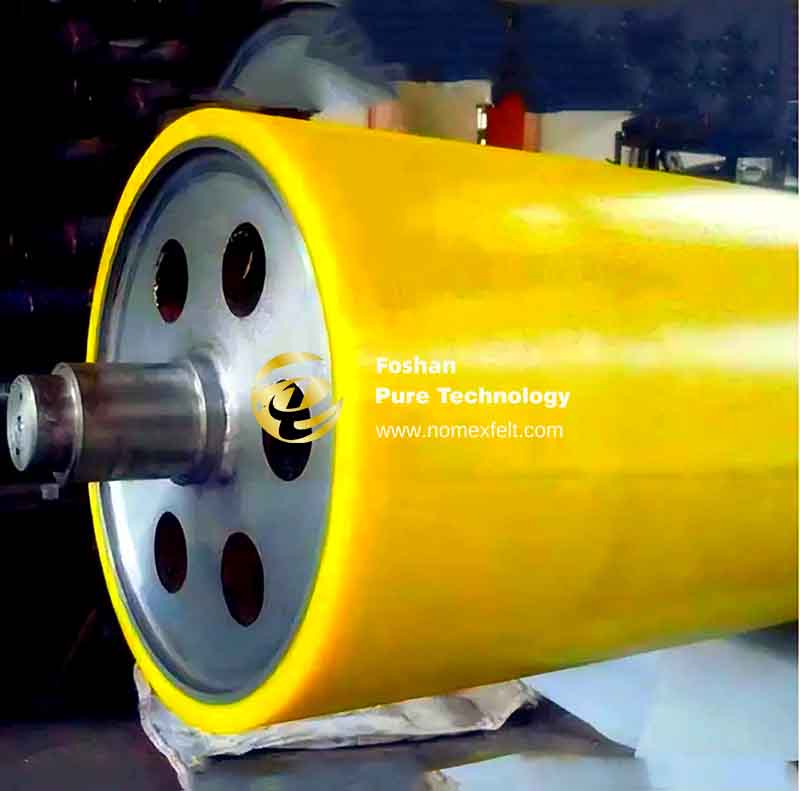
Nylon roller covers
Lightweight and high strength: Nylon rollers are lightweight and high in strength, making them easy to install and carry.
Wear and corrosion resistance: Nylon material has good wear and corrosion resistance and can extend its service life.
Self-lubricating: The surface is smooth and self-lubricating, reducing friction and wear.
Nylon rollers are used in weight-sensitive transmission systems that require wear and corrosion resistance, such as electronics and precision instrument industries.
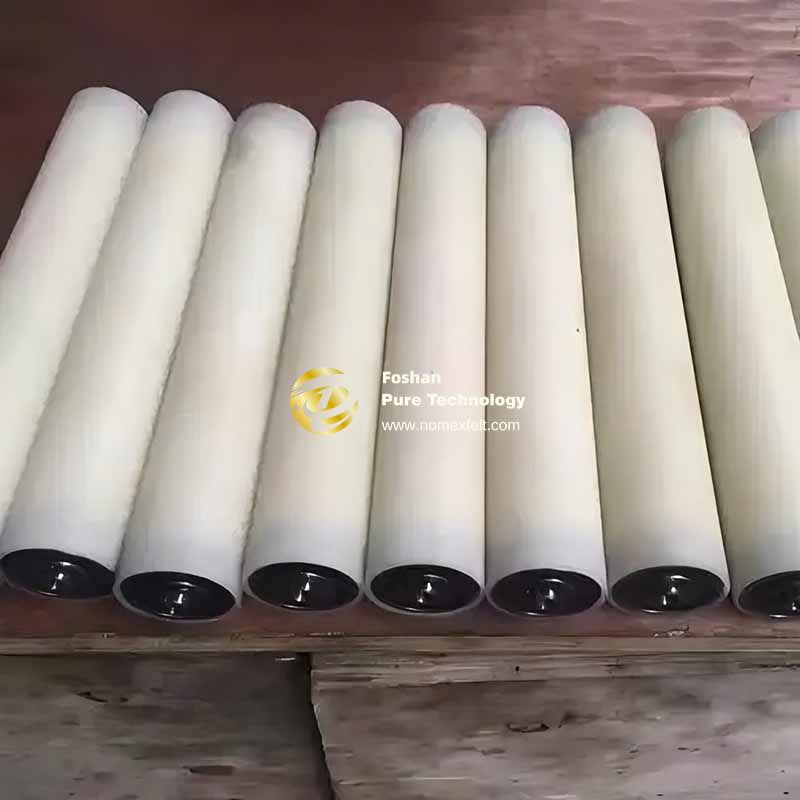
Rubber-coated roller covers
Good elasticity: Rubber rollers have good cushioning and shock absorption properties, reducing collision damage during material transportation.
Non-slip and wear-resistant: The surface is extremely non-slip, ensuring stable material transportation. The rubber material is also wear-resistant.
Low noise: Low noise operation helps improve the working environment.
Rubber rollers are widely used in the light industry, textile industry, packaging industry, and other industries that require flexible transportation and reduced noise.
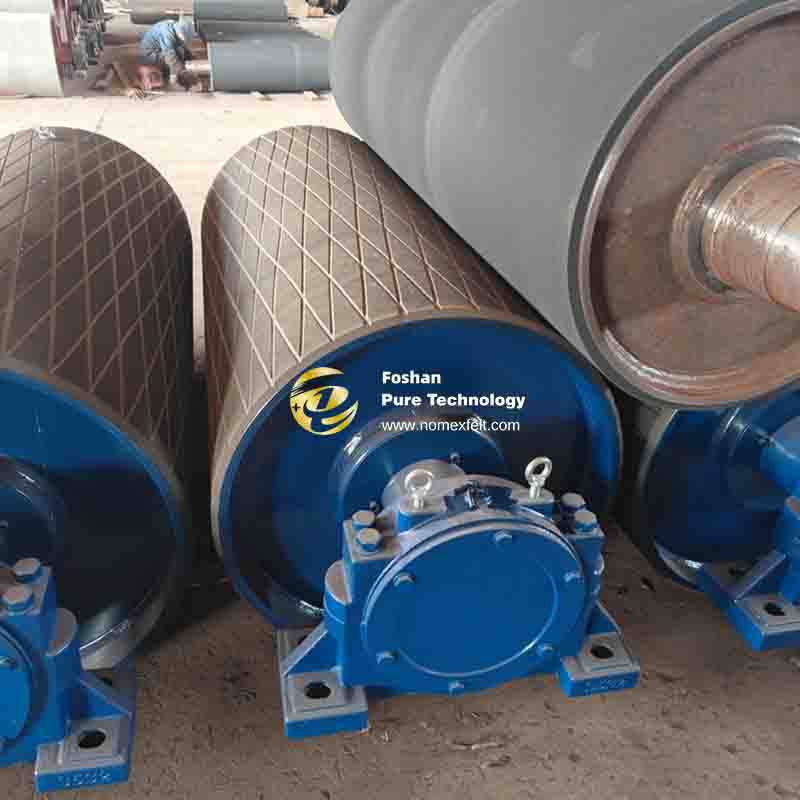
Ceramic-coated roller covers
Excellent wear resistance: The ceramic rollers of conveyor belts have a service life of at least 5 years, reducing the frequency and cost of maintenance. The practice has proved that the service life of ceramic rollers is more than 10 times that of traditional rubber-coated rollers.
High friction resistance: There are convex points on the surface of ceramic sheets, high roughness, and a large friction coefficient between ceramics and belts, so continuous operation is not easy to slip and run edge.
Ceramic-coated rollers are used for high-temperature ingot transportation in steel plants and coarse particle transportation in mines.
Pbo roller covers are the top material among special materials. Its performance parameters (strength, temperature resistance, corrosion resistance) far exceed those of traditional special fibers such as Kevlar.
It is mainly used for the exhaust port and sliding table of the aluminum extrusion press because the profile temperature is the highest and most fragile at this stage.
Its seamless surface prevents carbon pollution and ensures the safe transportation of sharp and irregular profiles. The material is also used in military, aerospace, and a few high-end industrial fields.
Features: ultra-high strength (tensile strength of 3.6GPa is 20 times that of steel), cut-resistant, able to ensure continuous operation in a continuous high-temperature environment of 480°C, kevlar roller covers widely used in the feed port and sliding introduction of aluminum extruders or high-tension conveyor belt drive rollers, such as heavy cranes in ports.
|
Material |
PBO roller |
Kevlar roller |
|
Maximum temperature |
600°C |
480°C |
|
Tensile strength |
Extremely high |
high |
|
Best use area |
in the discharge port and sliding table of the aluminum profile extruder |
Aluminum extruder feed port and slide introduction |
|
Contamination risk |
Extremely low |
low |
|
Cost |
Higher |
Medium |
Tested by ISO 283:2023 conveyor belt standards
Choosing the right casing depends on matching materials based on mechanical load, temperature range, dielectric properties, electrical requirements, and size restrictions.
Metal casing roller: high-temperature resistance >650°C, high compressive strength, but heavy and highly conductive (insulated treatment required).
PBO aramid roller sleeves: 10 times stronger than PBI, has higher heat and flame resistance than other organic fibers, and can work in various harsh environments.
The Conveyor Equipment Manufacturers Association (CEMA) recommends PBO composites for temperatures exceeding 500°C, a guideline we’ve successfully implemented in 38 aluminum extrusion plants globally.
But in my opinion it also has some disadvantages, such as poor UV resistance, which can easily weaken its function under strong sunlight. Although PBO has particularly strong chemical properties, its performance and strength will also be significantly reduced once it is in a strong acid environment.
Para-aramid roller sleeves: high strength, zero heat shrinkage, tear, and stretch resistance.
Although Kevlar has strength and toughness, it also has some disadvantages that limit its effectiveness, such as moisture absorption, poor compressive resistance, and difficulty in cutting and drilling, requiring special drills.
Nomex sleeves: excellent tear and abrasion resistance, excellent high temperature, and chemical resistance are the best choices for many industries.
Compared with Kevlar, Nomex has lower overall temperature resistance, so Nomex roller can only work in medium-temperature areas.
Polyester roller sleeves: low cost, can be mass-produced, has a certain elasticity and can maintain its shape well, has natural mildew resistance and chemical resistance, which increases its durability. The disadvantage is that the air permeability is relatively poor, and the temperature resistance is <180°, so it can only be used on low-temperature workbenches.
Although its flame retardant point is relatively high, it is easier to melt than you think, so you must control the temperature well.
Conveyor roller sleeves are essential in many industries.
Aluminum extrusion: used to convey hot, sharp profiles on a cooling table.
Resource mining: long-distance transportation of ore, coal, sand, and gravel.
Transportation: container loading and unloading, bulk conveying systems, rubber, and polyurethane can smoothly handle a variety of materials.
Food and pharmaceutical manufacturing: meat sorting lines, baked goods cooling conveyor belts and medicine bottle packaging lines, aseptic raw material transportation.
Silicone and polyurethane ensure hygiene and reliability.
Regularly check the roller sleeve for damage, wear, or misalignment, and check for cracks and dents.
If any problems are found, they should be replaced immediately. Daily, you can wipe the roller with a soft brush or cloth to remove dirt, dust, and grease on it, and clean it at least once a week.
If the roller has reached the stage of replacement, do not try to repair the roller.
It will not only affect the performance and quality of the roller, but may also increase costs in the end.
The correct approach should be to choose a new roller that can match your conveyor type, size, and application.
When replacing the roller, employees must strictly follow the operating procedures and safety measures, and learn the procedures for operation, replacement, cleaning, and inspection.
You can also regularly ask suppliers to repair and replace your rollers on site, and let them give you suggestions, give the best solution, and conduct employee training.
Choosing the right conveyor roller covers is the core decision to improve equipment productivity, ensure safety, and extend service life.
Each material has its specific use in a certain field. Choosing high-quality roller covers and timely maintenance can ensure smooth, cost-effective operation.
If you need to replace the roller covers, you can contact us at any time. We are a professional high-temperature felt manufacturer.
As we know, Heat Transfer Printing Felt is suitable for fabrics, decorative fabrics, curtains, le...
Read Safety Rules for Laundry Management to be a qualified manager. PARTⅠ Laundry room Safety Gen...
The aluminum extrusion machine is the leading equipment for the production of aluminum profiles. ...
Heat transfer printing is a contemporary printing process in the clothing market. It prints the p...
In the textile industry, felt is only a small part but important. About how to choose felt that i...
Foshan Pure Technology Company., Ltd. helps conveyor belt manufacturers source equipment to metal...
Nomex, an intermediate aramid, also known as aramid 1313. It is characterized by good heat resist...
In the 1960s, the Dupont developed a kind of aramid composite material, it is Kevlar. It has very...